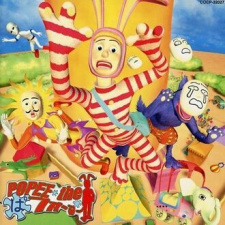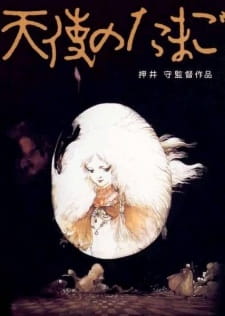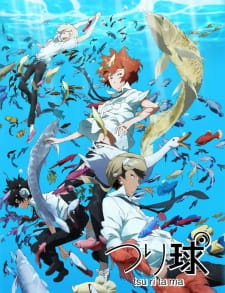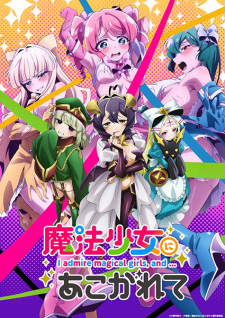Nov 29, 2023
Popee the Performer is a fascinating gem that has garnered quite an audience since its release. Its uncanny CG art style has led itself to have a mostly negative reputation outside of its fanbase, with many calling it immature and ugly. Yet it's this bizarre and masterfully crafted surreal CG art style that gives this anime such a unique identity for itself. It makes the most of its raw, uncanny art style alongside its surreal comedy-horror to force the audience to be utterly baffled at all times. This unique identity of Popee is one that is unanimously celebrated by its fanbase. However, an aspect I
...
don’t see talked about nearly as often when it comes to Popee’s identity is its creators. This identity goes hand-in-hand with the creator’s own visions and ideas during production. Masuda Ryuuji (director and writer) and Wakako Masuda (art director, art designer, and character designer) are masters of their own imaginations, making the most of the production and scheduling limitations to realise their own vision and ideas for Popee, forming what is undoubtedly the greatest surrealist comedy you can find in the medium. Here’s how.
Before Popee’s release, CG animation was already a common practice to aid the animation process; however, it was very uncommon to see projects made with a fully CG animated art style. Many that did at the time, for example, the full-CG 2000s film A.LI.CE, felt too uncanny and strange in a way that wasn’t particularly endearing; what makes Popee any different? Popee the Performer had a low budget of ¥100,000 a month to work with (roughly 1,000 USD). Thus, one may notice that Popee’s animation feels stiff, the backgrounds are always just vast deserts that rarely differ, and the designs are simple yet weirdly creepy. However, all of these elements are exactly what makes Popee so endearing, as it's how they’re utilised and executed that makes it all work.
Popee’s animation works because of its absurd exaggerations. We see characters' faces deform as their eyes pop out of their sockets, or turn into devils with maniacal smiles. We see Popee propelling like a rocket by shitting fire out of his ass, and Kedamono driving an invisible car. The raw and unpolished-feeling CG animation only serves to assist the absurdity of these moments, and they would not be as funny any other way. This distinguished visual style is further supported by surprisingly good cinematography, amplifying both the funniest and creepiest moments by virtue of highlighting their absurdity. One example of this is in episode 1, when Kedamono looks up at Popee as he’s being cut in half during a magic trick; the sun is directly behind Popee as he’s looking down, causing his face to be hidden in a shadow. This simple shot highlights the uncanniness of Popee in this scene by use of lighting. It’s fascinating how the CG animation allows for such shots to be achieved, and Popee uses this to its full advantage with many interesting camera movements throughout the anime.
Another element of Popee’s visual style is the setting. A vast and seemingly desolate desert surrounds the bright, colourful circus, where most episodes take place. While the choice of taking place in a desert was a decision made due to a lack of resources and budgeting (more on that later), a lot of Popee’s surrealism is achieved because of this decision. In a way, the vast desert feels like a canvas for any crazy set pieces the creators might come up with. We get to see this in full swing after episode 14, when Popee’s production started to take off after the show’s length was extended due to its increasing popularity. My favourite example of this is episode 25, during a scene where Popee and Papi are terrorised by a massive creature looming over the skies, with the vast desert there to accentuate the surrealism of the scene.
The designs are very simple and childish, which is why the surreal horror-comedy style works all the more. Like when Popee smiles maniacally after running over Papi in episode 26, or when Popee’s face turns into a demon in episode 3; it’s creepy when these seemingly childish designs put on a horrific face. All of these visual elements work incredibly well in tandem with one another to form Popee’s unique comedic language. This is why many find Popee the Performer to be so endearing. It wears its absurdity on its shoulders with pride, utilising the CG art style to facilitate its absurd horror-comedy. Though, what’s more fascinating is looking into the intent of this style from its creators.
A friend of mine interviewed Masuda Ryuuji last year in the hopes of making a Popee the Performer video. While that video never came to fruition, they were kind enough to share the information with me, and there are some interesting details to mention. First of all, the inspiration for Popee comes from a 1983 Suntory beverage commercial (check sources for the link) that features circus performers traversing a desolate desert out in the middle of nowhere. It is surreal and weird, even featuring a character in Popee’s iconic red and white striped suit. The commercial is based on Picasso’s Family of Saltimbanques, a painting that portrays circus performers not through the cheerful perspective of their performances but as an isolated group within a static and melancholy image; an image that symbolises the poor, independent, and isolated. This is most fascinating when talking about Popee, as this isolation is conveyed through the desolate desert landscapes and lonely circus performers only ever performing for themselves. Masuda Ryuuji wanted to combine this world with a slap-stick animated cartoon, which is why the world that Popee conveys is so surreal and uncanny. As for Popee’s artistic influence, Masuda says that listening to music influenced him the most. He listened to various songs and cherished the images that popped in his head, as that’s the easiest way for him to expose these ideas he had. Knowing this, it makes a lot of sense why Popee’s humour is the way it is. Masuda Ryuuji says that the surrealism in Popee the Performer is his own taste, and the production he had to work with matched that. Popee’s crude CG animation helps support this surrealism Masuda had in his mind.
Popee’s conception came to be when Kids Stations needed to fill in a 5-minute time slot. This was Masuda’s chance to try creating the 3DCG animation he always hoped to do. It’s no secret that Popee had a low budget, with ¥100,000 to create two episodes a month. The limitations of the CG tech at the time really meant that Masuda had to make the most of what he got, and makes the most he does. With how inherently weird early CG animation is in the first place, Masuda is able to use this to his advantage to realise his own surreal ideas, accentuated by the humour being as absurd and offbeat as possible. This is exactly why it’s so endearing. Not only this, Popee is also able to consistently execute such bizarre ideas every episode because of the freedoms that CG animation allows. In Episode 6, Kedamono uses his imagination to drive an invisible car. This is a bit that would’ve certainly been possible using 2D animation, however, the utilisation of Popee’s style not only accentuates the gag, but does so in a way that feels natural for the show. I really can’t imagine it working any other way. The CG opens up so many possibilities in the animation, and we’re able to see Popee take full advantage of its medium to create very surreal and funny moments throughout the series.
Building more on Popee’s conception is something Masuda mentioned in a Vice interview back in 2018. He talks about how the story of Popee the Performer is ironic. Popee has ideals; he wants to be a good performer, and he tries to be the best at what he does. In the process, however, he becomes mad with disappointment, and disturbed with the realisation that he cannot be the best. Masuda sees a lot of this in himself and in the people around him, those who become obsessive of their ideals. Disappointment in themselves, turning into competitiveness, and ruining themselves. Popee himself is not a good influence whatsoever, however, he does represent a rebellion. Masuda explains this in the Vice interview, and I will actually quote this part since it’s very interesting (keep in mind that I’m using DeepL to translate from Japanese to English, so there will be some mistakes):
“Children's minds are repressed. They are told, ‘Don't fall down,’ or ‘Don't cry because you are a boy.’ Their emotions are not free. When children are drawing crazy pictures, their parents stop them and tell them to draw cheerful pictures. But people will always have feelings like anger or hatred. It is for adults to think about how to express those feelings. Beating people up or stabbing them with a knife may be one expression, sure, but it is a safer expression to draw. Adults should teach children safe ways to express themselves, not suppress their emotions.”
Popee represents these emotions—these feelings of anger and frustration that we suppress—very openly, in an often sadistic fashion. Its visceral surrealism and violence come from expressing these emotions, and viewing the series from this perspective is rather beautiful. Everything about Popee feels rebellious, from its story all the way to its art style, and that’s something I really like about this anime.
Popee the Performer is an incredibly important anime to me, as it was the first anime that made me genuinely think about what “art” means. Popee went against all of my sensibilities towards anime up until that point. It was weird, disgusting, and unapologetically violent. It was unconventional in almost every way. I was initially put off by it, but curiosity led me to try it anyway. I was blown away. I had so much fun with an anime that I initially judged it due to my surface-level evaluations. It made me think that perhaps I shouldn’t be so quick to judge art just because it deviates from my sensibilities. This mindset led me to try many weird and niche anime that I would’ve never thought to try before. I’ve become more open to researching art, and in turn, I find myself with even more appreciation for the things I like. All of a sudden, it felt like there were endless possibilities within this medium, and I only just took my first step into it all. I’m forever grateful for this experience I had with Popee back in 2019, an anime rooted in unconventionalism and the rebellion of norms from the very beginning.
Popee the Performer fucking rules. I hope this review convinced you to give it a try.
Sources:
Popee Wiki: https://popeetheperformer.fandom.com/wiki/Popee_the_Performer
Vice Interview: https://www.vice.com/ja/article/evkjqj/popee-the-performer
Commercial https://www.youtube.com/watch?v=hy-z421FwGQ
Also, special thanks both to @twinsister for editing and providing support with this review and Eva for providing information from their Masuda interview.
Reviewer’s Rating: 10
What did you think of this review?
Nice
 0
0
Love it
 0
0
Funny
 0
0
Confusing
 0
0
Well-written
 0
0
Creative
 0
0Show all





































